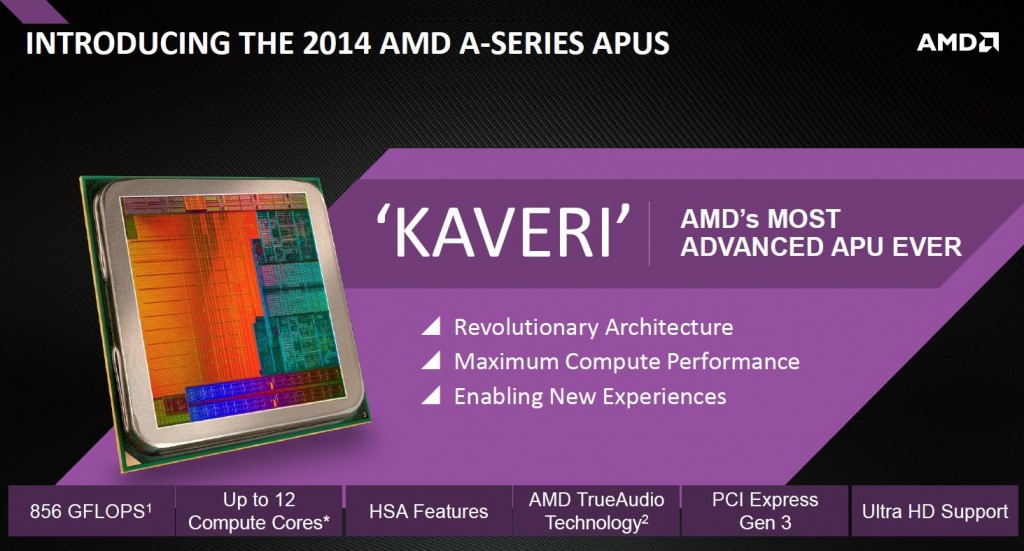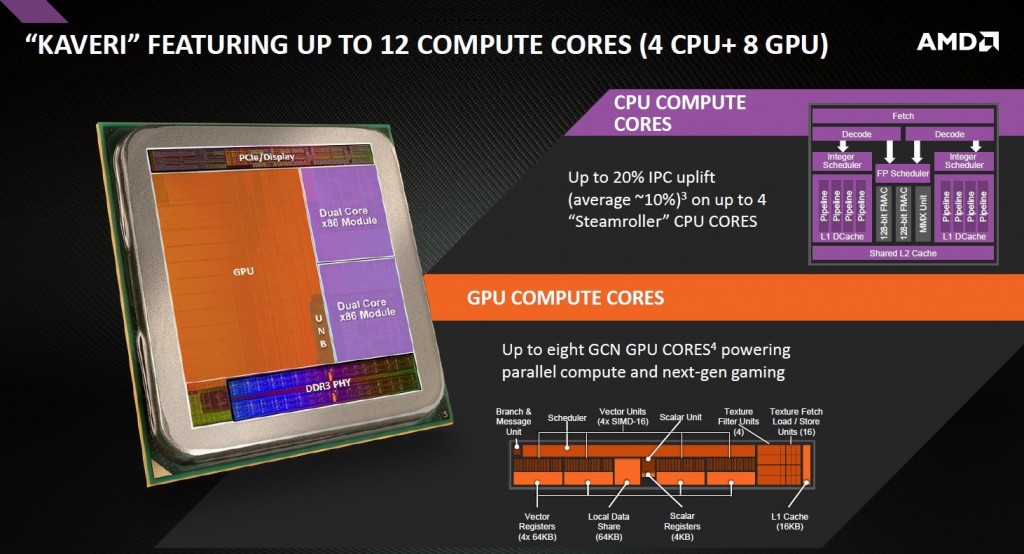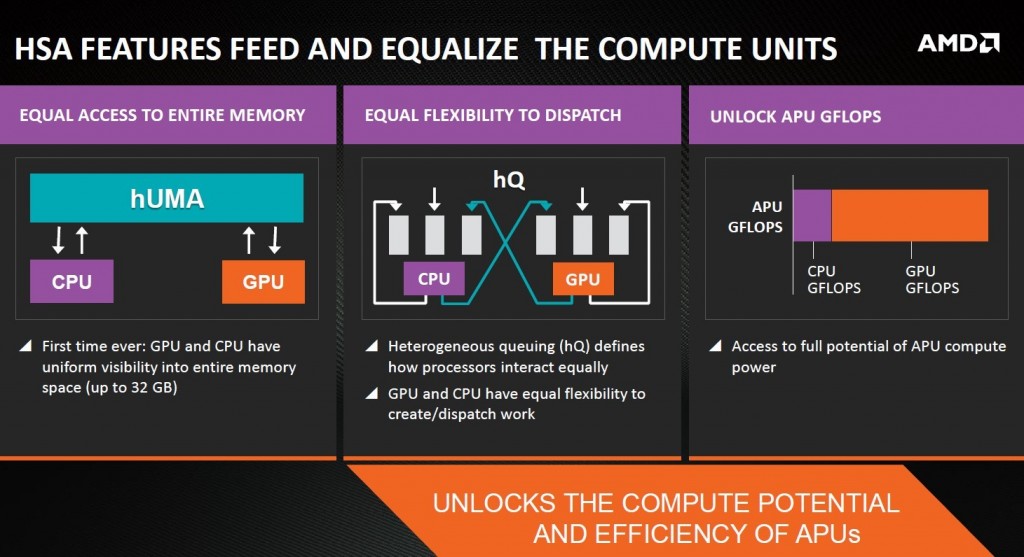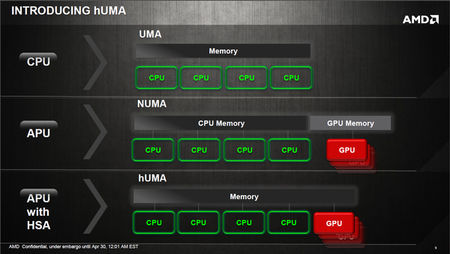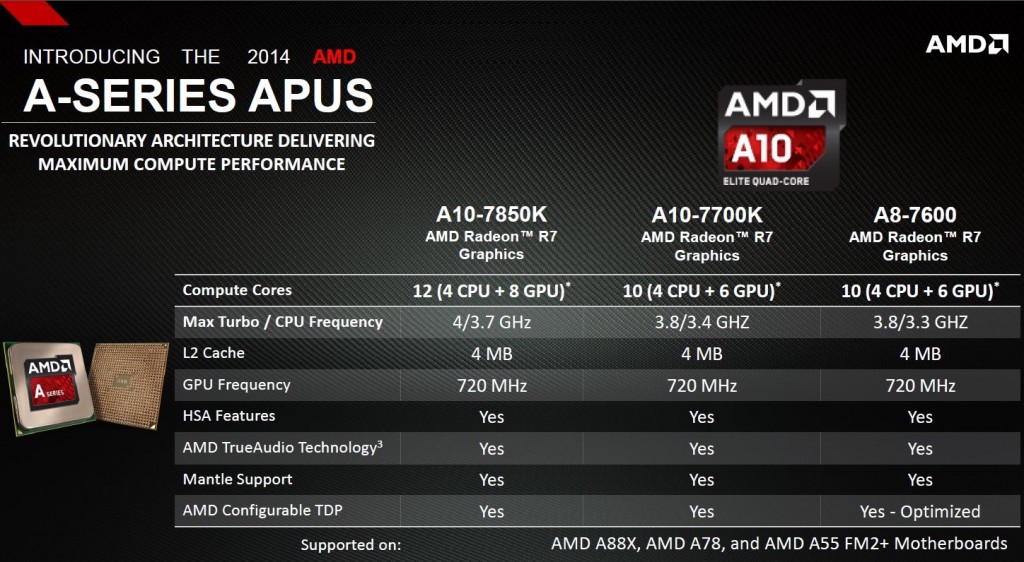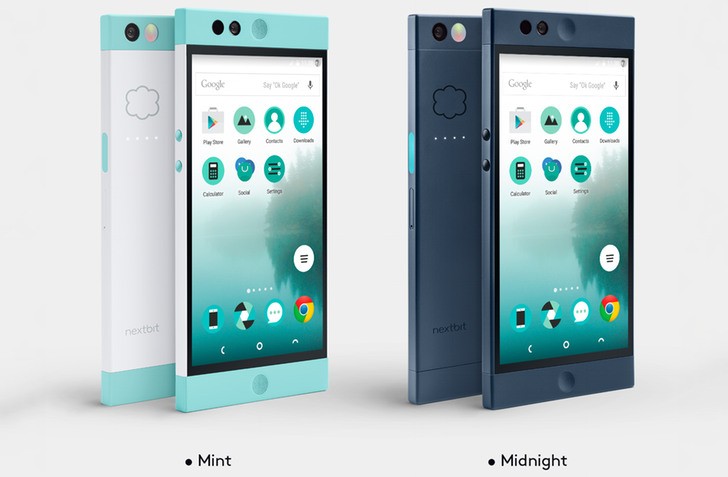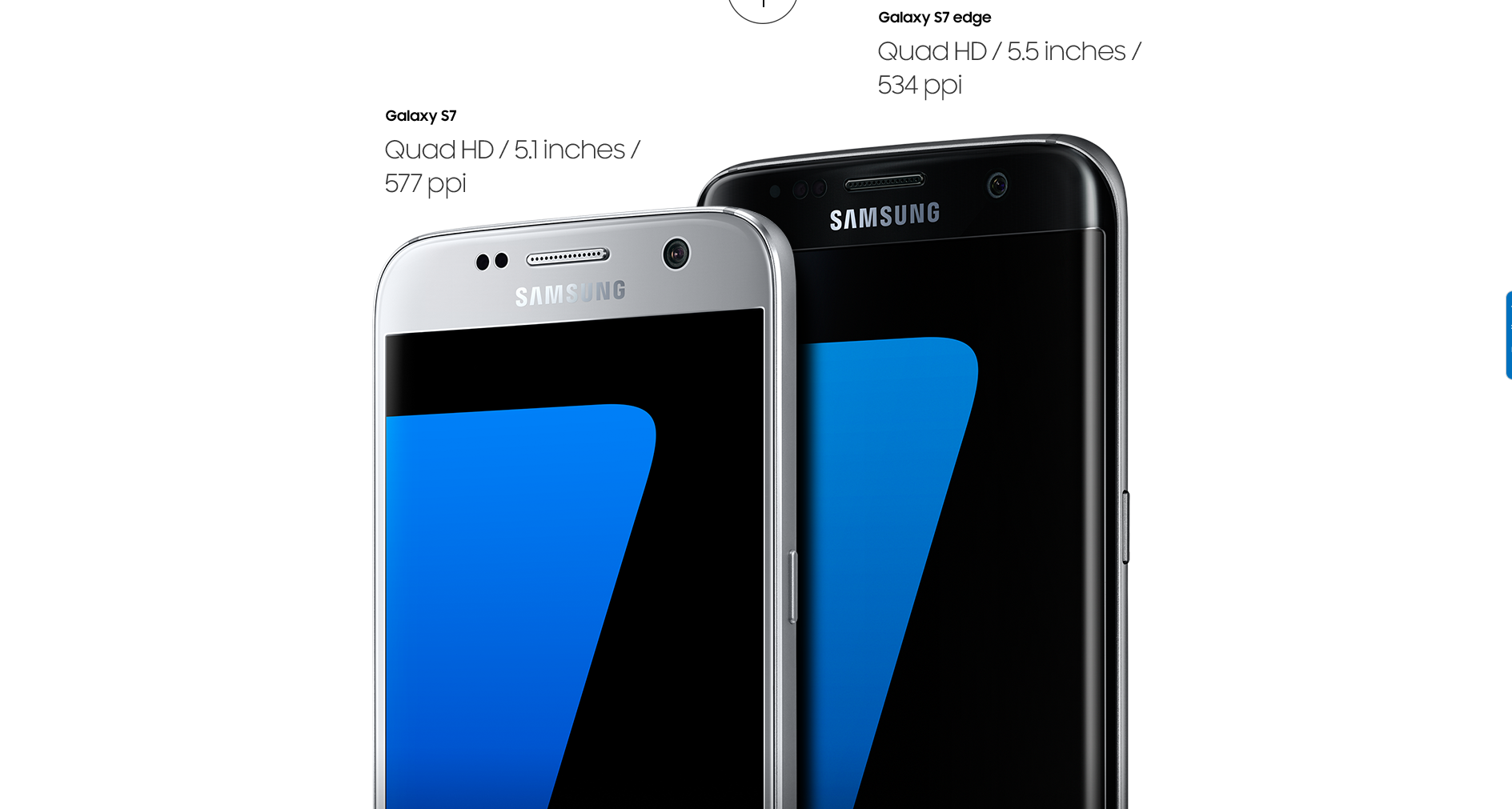AMD announced its 2014 A‑Series APU for the desktop platform, code-named “Kaveri”. Kaveri built in the new FM2+ package. AMD integrate two of its newest CPU and GPU micro-architectures, “Steamroller” for CPU and Graphics CoreNext 2.0 for the GPU. Kaveri is also built on newer generation 28nm SHP (Super High Performance) silicon fab process.
AMD Kaveri has 245mm2 die with 2.41 billion total transistors. A “Steamroller” module is a combination of two 64-bit x86 cores, which feature dedicated and shared components. Kaveri has two such modules and so physically, it features a quad-core CPU.
Kaveri has eight GCN compute units, which make up 512 stream processors way more when compares to its preceader 384 stream processors. The GPU supports DirectX 11.2, OpenGL 4.3 and Mantle. It also supports AMD’s TrueAudio technology. The GPU supports Ultra-HD (3840 X 2160 pixels) display at 60 Hz refresh rate over DisplayPort 1.2. It supports 4 display outputs.
The uncore portion of “Kaveri”, AMD developed a new-generation integrated memory controller (IMC), which supports up to 64 GB of dual-channel DDR3-2400 MHz memory. The second big highlight in the uncore department is the PCI-Express root complex, which now gives out up to 24 lanes of PCI-Express gen 3.0. This should translate into better CrossFire performance, in which a pair of graphics cards are given an 8‑lane PCI-Express link, each.
The Kaveri uses HSA (Heterogeneous Systems Architecture), is an intelligent computing architecture that enables CPU, GPU and other processors to work together in harmony on a single piece of silicon by seamlessly moving the right tasks to the best suited processing element. HSA will empower software developers to easily innovate and unleash new levels of performance and functionality on modern computing devices, leading to powerful new experiences such as visually rich, intuitive, human-like interactivity.
Another main feature of Kaveri is hUMA (Heterogeneous Uniform Memory Access), is a shared memory architecture used in APUs (Accelerated Processing Units). In a hUMA architecture, the CPU and the GPU (inside the APU) have full access to the entire system memory. hUMA improves the performance and efficiency of the processor by enabling the CPU and the GPU to seamlessly share data. This should translate to greater system memory available to the OS (as “hardware reserved” GPU memory is eliminated), and better GPGPU performance.
